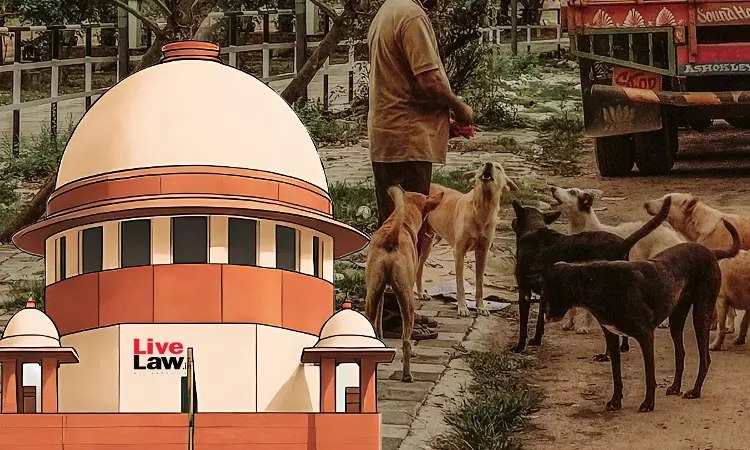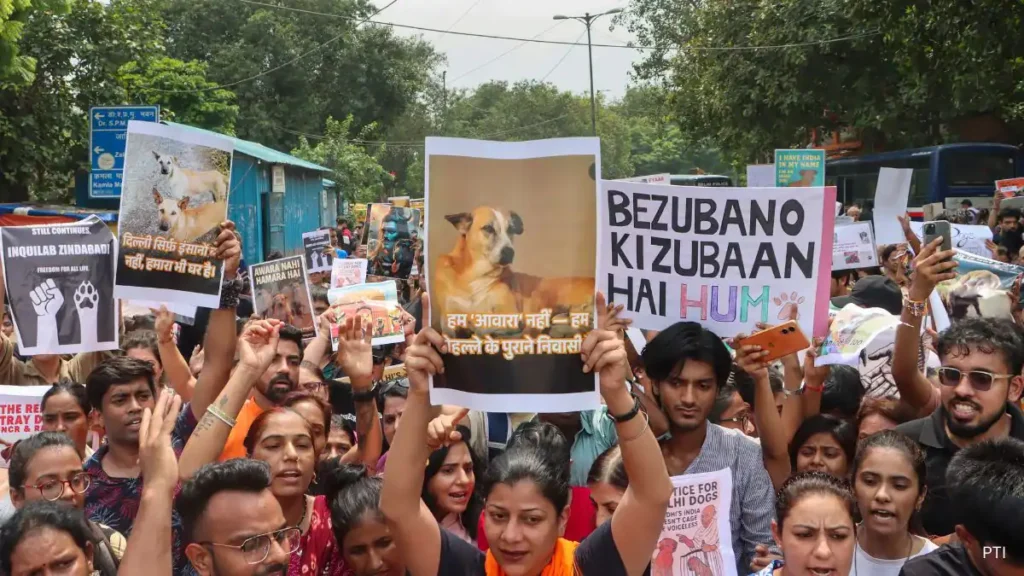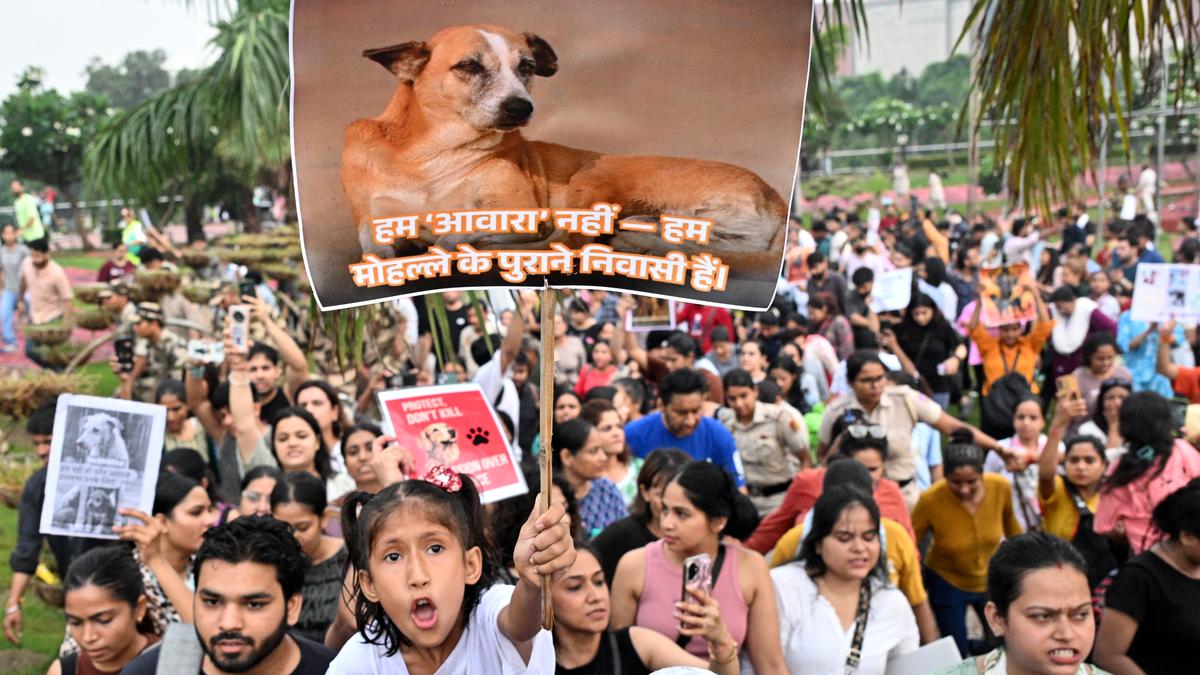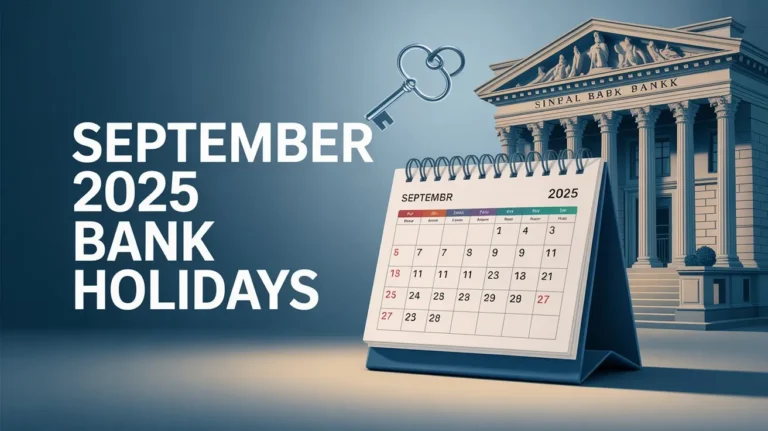The Supreme Court has made a significant change to its previous directive regarding stray dogs in Delhi-NCR, a landmark change in how authorities will deal with the increasing number of street dogs. The court, in its current order, held that stray dogs will not be taken to permanent shelters. Rather, they can be let off into their initial locations after being sterilised, vaccinated, and dewormed. The exceptions are only for dogs that exhibit violent behavior or those with rabies, who will be prevented from reintroduction into public areas.
In addition to this, the court also imposed a stern ban on public feeding of stray dogs. Acknowledging the necessity of reconciling animal welfare with safety in public places, the bench instructed civic authorities to establish feeding points in every municipal ward. This allows stray dogs to be fed under controlled conditions without inflicting inconvenience or danger on the public.
Expansion of Case to National Policy
A three-judge bench of Justices Vikram Nath, Sandeep Mehta, and NV Anjaria heard the case. The bench also expanded the scope of the case and directed that all other similar pending petitions in high courts across India be transferred to the Supreme Court. The judges stated that this would allow the formulation of a uniform and integrated national policy on controlling stray dogs, the need for which has been repeatedly voiced by everyone, including activists, the public, and the civic bodies.

Background of the Case
In the past, the Supreme Court had ordered stray dogs in Delhi-NCR to be collected and kept in shelters permanently. The reason for this was to decongest roads and limitations on the increase of dog bites and rabies cases. This order provoked public outcry by animal rights advocates, NGOs, and even celebrities. They claimed that mass removal of stray dogs would never be possible, cost municipalities money, and anyways would not limit the population at all.
In light of this defiance, the court re-evaluated its earlier ruling and confirmed post hoc that its order would conform to the Animal Birth Control (ABC) Rules. The ABC Rules “require” that stray dogs be sterilized, vaccinated, and re-released into the same area rather than being held in shelters indefinitely. Also, municipalities needed to be admonished against obstructing the process of broad community sterilizations, vaccinations, and re-releases, since these actions are the basis for regulating stray dog population in the long run.
Reactions to the Order
The new ruling prompted mixed reaction. Former Union Minister and animal rights activist Maneka Gandhi welcomed the court ruling as a more practical and humane response, but also demanded that “aggressive behaviour” be defined more closely so as to not abuse the rule.
Conversely, a number of residents in Noida and other parts of Delhi-NCR were not happy. They insisted that the former order, which permanently removed the strays from the streets, provided better protection from dog bites and potential rabies infection.

Additional Guidelines and Adoption Policy
The Supreme Court also brought in other measures to make the system more accountable. It permitted the adoption of street dogs through the Municipal Corporation of Delhi (MCD). But once adopted, the animals cannot be discarded back on the streets. For its proper enforcement, the court ordered MCD to establish a special helpline for citizens to report offenders. Persons found feeding dogs on the streets or disobeying rules will be prosecutable.
In addition, NGOs and parties wishing to be impleaded in the case are required to deposit a security amount between ₹25,000 and ₹2 lakh. The court added that this measure would weed out genuine stakeholders from frivolous petitioners filing petitions on a whim.
Increasing Alarm Over Dog Bites
The initial August 11 directive by a different bench had been prompted by sobering statistics. There were nearly 37 lakh dog bite cases and at least 54 deaths suspected to be due to rabies documented by government figures alone in 2024. The court quoted that such figures highlighted the imperative of effective management. However, critics insisted that shifting lakhs of dogs into shelters within a short period was logistically impractical and not economically viable.
A Balanced Solution
By making this recent revision, the Supreme Court has attempted to find a middle point between citizen welfare and animal welfare. By supporting sterilisation, vaccination, and strays’ return to their area, while regulating feeding habits at the same time, the court aims to cater to both citizens’ and activists’ needs.
This ruling is a move toward a uniform national policy on managing stray dogs—one that acknowledges the limitations of infrastructure while valuing humane treatment of animals. Its final form will, however, be determined by how well civic institutions execute the court’s guidelines over the next few months.








